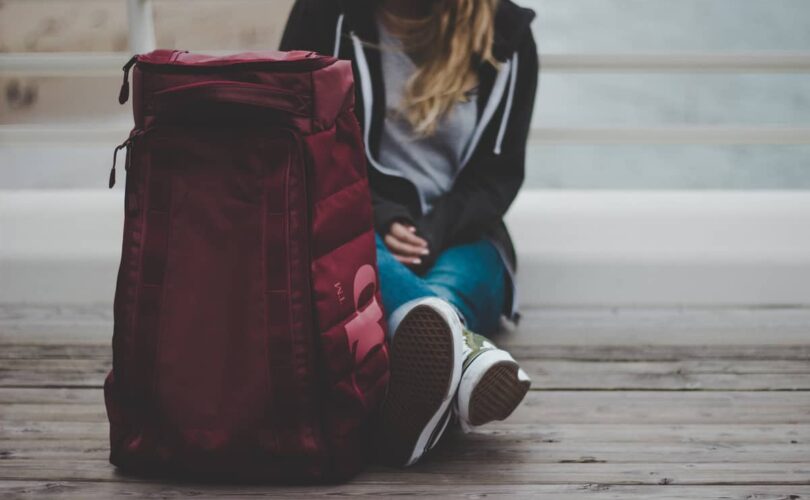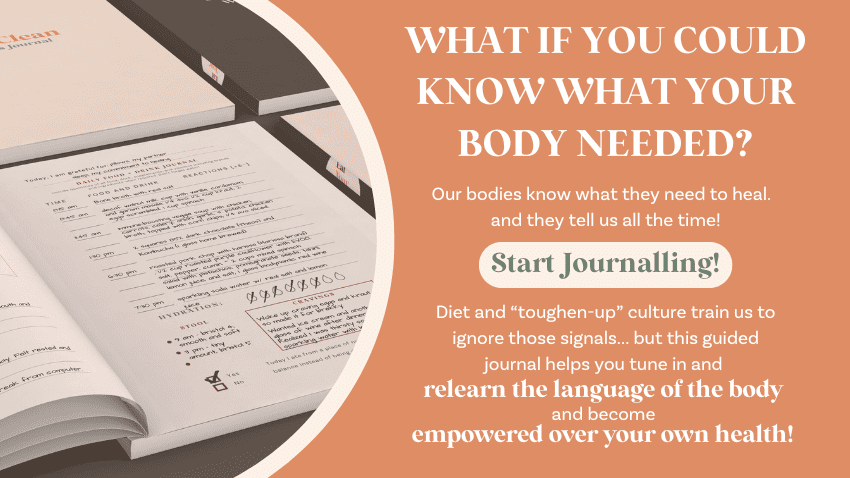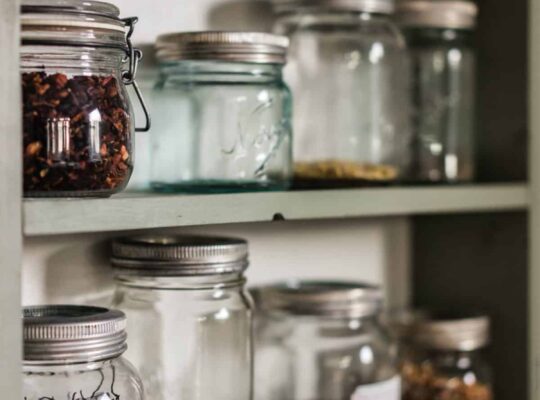Travelling can be the hardest time to make eco-friendly and sustainable choices. By its nature, travel removes the typical tools you use to live green. But you can partake in more sustainable travel with these easy tips that make reducing waste on the road manageable.
As part of Earth Week, I’m hosting a Green Giveaway with some of my favorite sustainable products on Instagram! Make sure to enter the giveaway to win some of these amazing earth-friendly gifts including a Klean Kanteen and Swell water bottle!
Enter the Giveaway on Instagram!
Travel today is a possibility for so many more people than previously. That opens up opportunities for people to connect, learn, and grow from each other’s unique points of view and experience. But unfortunately, when we travel we are prone to creating more waste!
We buy disposable water bottles, get coffee and food on the go in single-use containers, and in general have less control over what waste we create since we are out of our normal systems.
After 10 years of nearly weekly travel, I’ve devised some ways to combat that system and reduce waste on the go. In this article, you’ll find a few simple and practical tips you can implement on your next trip.
I do each one of them nearly every time I travel and they don’t take much effort or divert from the travel experience. Hopefully, you can use these tips to start reducing your impact while exploring the world or just crushing that next business trip.
Do What You Can, When You Can
I recently saw a quote that perfectly describes how I think we should be tackling our environmental problems:
And it’s true!
Let’s do some math on the power of numbers and waste
One person that manages to be 100% zero waste and carbon neutral will not offset much of the damage caused by the other 320 million people in this country, let alone the world.
But, if all 320 million people used 1 less plastic cup, straw, and spoon per week we could reduce nearly 50 billion pieces of single-use plastic per year! If we assume .42 grams of plastic per straw, 3.5 grams of plastic per cup, and 2.7 grams per plastic spoon, that would be a reduction in 165 million tons of plastic waste per year. And that’s just in the US.
Is it perfect? No. Is it a step in the right direction? Yes.
And it is better than nothing! Also, I believe that once you make small changes to reduce some plastic, making additional changes will be less challenging and you will eventually use less and less.
Please don’t interpret this as minimizing the problem. Nor should you interpret this as me saying plastic cups and straws are the entire problem. They are not! But they are a much-needed start.
You have the power to make a change with small habit tweaks
Rather, take this as your permission to know that something is better than nothing. You can make a difference without upheaving your entire life and running to the hills to raise goats (though that sounds very nice).
It starts one step at a time with tiny tweaks that eventually become lifestyle changes.

Make it a Habit, One Small Tweak at a Time
Start with one small thing, even if you can’t do everything right away. That one small thing will eventually become a habit and you can embark on another small change.
For example, my current job requires that I fly, which has a huge impact on the planet. The other zero-waste milestones I hit likely don’t make up for my flights. But, they do make up for themselves and reduce my overall waste output. It would do no good to throw up my hands and say “since I’m regularly flying my impact is so large there’s nothing I can do.”
It’s better to reduce what you can than to do nothing at all.
So, if you want to do something, but aren’t sure where to start and aren’t ready to go off-grid, making all of your own food from your garden and personal windmill, then here are some easy and practical places to start right now!

Tips to Make Your Travel more Zero Waste
Below are my tips on how to make your travel a little more sustainable and recommendations on my favorite zero waste products that I travel with.
- Metal Water Bottles
- Metal Travel Coffee Mugs
- Reusable Travel Utensils
- Metal Straws
- Reusable Laundry Bag
- Bring Your Own Snacks in Reusable Containers
- Choose Restaurants Intentionally
- Always Bring a Reusable Bag
- Consider Your Mode of Transportation
Metal Water Bottles
Metal water bottles used to leak horribly so many turned to plastic alternatives. However, those plastics can leach bisphenols (like BPA and BPS) into your drink. Also, the fancy bottles with straws tend to break frequently, requiring replacements and more waste.
I recommend metal over plastic because at the end of the day, a reusable plastic water bottle can still end up in a landfill and plastics can interfere with the endocrine system. You may have a BPA (Bisphenol A) free water bottle, but manufacturers created other bisphenol additives with similar effects. Mother Jones did an expose you can find here.
I carry a metal water bottle with me almost at all times and I recommend it as a great way to stay hydrated and reduce waste. It used to be that metal water bottles would leak and so I’d resort to plastic. But I’ve found a couple of leak-free brands that I love.
I use Swell and Hydroflask but this is by no means sponsored by either brand and there are tons of options if you don’t like those.
A smaller sleeker metal water bottle
For city travel where water is plentiful, I use my Swell bottle. It’s compact and fits into my bag easily. They even have mini bottles for smaller purses.
I’m in love with the Swell bottles because they are the first metal water bottles I’ve found that don’t leak and they can keep liquids cold or hot for 24 hours.
Besides not leaking and fitting into my purse, the small mouth hole makes it easy to drink out of.
The downsides are it is small, so I rely on frequent access to a water fountain or a destination where I can drink out of real cups.

A Larger Metal Water Bottle
For more outdoorsy trips where I’m going to be drinking a lot of water, like heading to the beach or up a mountain, I need something bigger. This is when I switch my sleeker Swell for a larger metal water bottle.
My personal choice is a HydroFlask and it has worked great for me. It’s Nalgene size so I have to fill up less often which is great for hikes, the beach, or party weekends. You can find similar ones here.
Additionally, this water bottle comes in handy on trips where the water isn’t potable. I’ll use this water bottle while traveling to international countries where I need to refill from a filtered water bottle.
I repeat – even in countries where you can’t drink the water – brink a reusable water bottle so that you can fill it up from one larger multi-gallon water container instead of buying multiple small single-serving water bottles. It’s still single-use plastic, but less of it!
Again with our motto here that something is better than nothing. And less is more.

Get a Metal Coffee Mug
The reasons to invest in a metal coffee mug are similar to metal water bottles. They reduce single-use disposable coffee cups and lids.
But with hot beverages, it’s not just the reduction in single-use cups. Many disposable coffee cups are lined with a thin layer of plastic or plastic-like substance to prevent the cup from getting wet and leaking. That lining leads to the same types of issues I mentioned above when discussing plastic water bottles. What’s worse is that hot beverages make those chemicals more solvent and so they are more likely to enter your blood stream.
I absolutely love my Klean Kanteen because it is the right size ( I don’t need 24 oz of tea and coffee, thank you) and it seals completely closed! There’s a twisting sip hole that is 100% spill proof.
I can literally throw this Klean Kanteen into my work bag, when it is full, and have no problems.
I keep one with me on most trips. This is also a great way to have tastier drinks on the plane because you can bring your own tea bag and just ask for hot water!

Reusable Travel Utensils
You can solve two problems with this one: never not having that fork, spoon, or straw you desperately want and reducing your trash.
Life on the road often means lots of meals out. Most hotels don’t have kitchens and it can be difficult to prepare your own food, especially on short trips. That means lots of trips to restaurants, many of which are on the go.

In the airport, or running from one meeting or tourist site to the next, you’re likely to stop at a fast casual restaurant or grocery store that provides only single-use plastic plates and utensils. If you’re lucky, they’ll provide single-use compostable utensils.
But if you bring your own utensils, you don’t have to use the plastic ones!
There are several options of varying size and practicality depending on how much you will use your travel utensils.
I use a Bambaw bamboo silverware kit because I like how it rolls up and it fits easily in my work bag, which means I always have it. I also like how it gives me all the utensils in full form: fork, spoon, knife, straw, and straw pipette for cleaning.
Just remember to ask for no utensils when you order!
Note: these are safe for TSA security. I travel with mine all the time and have never had it stolen. The one caveat is flying out of Panama (PA) where they may require the utensils to be checked.

Metal Straws
We’ve all heard about the damage plastic straws can wreck on wildlife (if you haven’t – see this turtle video).
Plastic straws can lead to over 73,000 tons of plastic waste every year. They end up in landfills and on beaches. Before long, they end up in our waterways and the oceans.
Often we don’t even need the straws they serve, for example when they serve cocktails with two plastic straws! WHY? But when you do need a straw, bring your own with you to avoid the plastic!

There are hundreds of reusable straw options, but for the road, I think metal is the best option. Metal straws are durable, easy to transport, and easy to clean.
If you need some metal straws, I like these metallic colored straws on amazon. You can also get silicone covers for the tips if you don’t like the feel of metal against your lips and teeth. You can order a pack of 8 silicone tips here.
And remember, the hardest part of using your metal straw is to remember to ask for No Straw when ordering!

Reusable Dirty Laundry Bag
How many of you have grabbed the dry cleaning bag from the hotel closet and used it as a dirty clothes bag?
I know. I’ve done it, too. No shaming here.
But there is a better way! My most recent suitcase (it’s amazing by the way!) came with a bag that’s perfect for all of my dirty laundry, though I think it was probably intended for shoes or toiletries. Now I keep that empty bag in my suitcase and fill it with used delicates.

These bags are washable so you can reuse them again and again. Yet, they can last several trips without a wash, so it isn’t effort-intensive to make the switch from disposable plastic to these reusable laundry bags.
I just bought this mesh one for my husband: Mesh Laundry Bag in Gray and I think this shoe bag would work well if you prefer a solid material.

Bring Your Own Snacks in Reusable Containers
Excessive food packaging is the hardest to avoid while traveling. Snacks and meals often come in plastic packaging. On top of that, they tend to be unhealthy options.
A way to combat both is to bring your own!
Use Stasher bags or other reusable food containers to bring leftovers on the plane. I’ve brought celery fritters, kale chips, homemade trail mix, large salads, and sliced apples with nut butter along on some of my travels.
Choose Restaurants Intentionally
When possible, choose restaurants or food in sustainable packaging. Reusable is best, followed by compostable, and then recyclable.
To find reusable cutlery, take the time to eat at a full-service sit-down restaurant. The majority of them don’t serve on single-use containers so you are reducing waste. Plus it is nice to stop and enjoy a meal from time to time while traveling.
Since we don’t always have the time or money to go to a sit-down restaurant, look at restaurants that make earth-conscience decisions. There are chains that use compostable utensils instead of plastic and source their ingredients well.
Regardless, try to pay attention to the quality of ingredients at the restaurants you frequent. Most restaurants who source locally and ethically will indicate so on their website.
Not only will those places likely serve higher quality ingredients that are more nourishing, but local ingredients also use fewer resources to get to your plate.
Always Travel With a Reusable Bag
Bring a
On standard three-day work trips, I keep a reusable grocery bag in the front pocket of my suitcase so that I can stop by the grocery store on the way to the office. This also serves as a personal reminder to get quality ingredients at the grocery instead of take-out while reducing bags.
I keep a smaller more flexible reusable bag in my work bag so that I can carry food and snacks on flights and back and forth from the hotel to the office. This is also the only bag I use for shorter trips and vacation. It folds up smaller than half my fist and fits easily into my bag.
Here I used that small reusable bag to carry a container of celery fritters for breakfast on the plane. This meal was zero waste and a way healthier breakfast than anything you can find in the airport!

Consider Your Mode of Transportation
While airplanes use a ginormous amount of fuel, there are economic drivers for airlines to make their planes more fuel efficient. Planes are using lighter weight materials so they use less fuel overall, which is the largest cost of airlines these days.
And while the reduced legroom is uncomfortable, it is making the flights more eco-friendly because you are splitting that fuel cost amongst more individuals. Next time your knees are slammed against the seat in front of you, just pretend you did it on purpose to reduce fuel emissions. 🙂

A couple of recent studies from Environmental Science and Technology Journal and the University of Michigan Department of Transportation noted that plane travel could be more fuel efficient than car travel, depending on the trip length, group size, and the fuel efficiency of your vehicle and the plane. This article gives a pretty good overview of different theories and considerations for carbon-efficient travel.
Check out the most fuel-efficient airlines here: 2017 airline fuel efficiency report.










